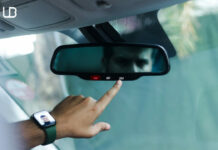An editorial special by our biker & blogger friend – +Sumantra Ray aka @upjaudimaag
Here is unbiased review of the Royal Enfield Classic 500:
I had been riding a STD 350 UCE for more than a year and a half when a brilliant opportunity to get hold of an almost unused Classic 500 for an unbelievably reasonable price sprang out of nowhere!
I had chatted up this German gentleman at an Enfield service station a few months back and remembered him mentioning about leaving India in September 2012. And luckily for me, it happened He was selling his 2011 Nov Classic 500 that had run only 1,700 Kms for Rs. 87,000! Don’t rub your eyes! I believe my love for riding paid off!
Looks and styling
So here is my assessment of the Classic 500, having ridden it for more than 5,000 Kms in the last 2 months and taken it through a variety of road conditions ranging from Delhi’s smooth tarmac, all the way through the rugged Spiti valley.
The looks of any vehicle are mostly always subjective, and same was the case here. Even though it was an exclusive green CL500, I would have rather liked it to look more like a Machismo. The bike, in spite of all its technical advancements for an Enfield, retains its classic styling and that is what makes it attractive.
The spring seats look pretty but aren’t as comfortable as the STD or Electra’s seat which have a slight lower back support. The handle, again a classic touch, isn’t the most comfortable, and I switched to the STD/Electra handle immediately.
The paint quality leaves much to be desired, the paint lining the ends of the tank opening has started peeling. What could have made it better was if Enfield had offered some amount of basic pre-delivery customization of the vehicle, much like Harleys. Things like seats, handles, paint jobs, tyres, etc. are easily swap-able between the models and would allow users to configure based on likes and needs.
The front end is dominated by the round ‘classic’ headlamp and ‘Tiger Eye Lamps’ that are inherent to Bullets. The improvement in the Classic 500s is that the headlamp is now a powerful 60W / 55W halogen which does its job brilliantly. The chromed rear view mirrors are pretty to look at and do their job till about 75 Kmph, beyond which the vibes make them too shaky.
The stopping power from the 280mm disc brake upfront is as good as it gets. I haven’t faced front wheel locking or loss of traction till now, in spite of having taken the bike through almost all possible conditions. One design improvement I would like to see is the removal of the number plate from the position under the headlamp to some place that doesn’t make it obtrusively stand out.
Coming to the tail, the retro touches are very evident on the round, protruding tail lamp and go well with the look. The tyre at the rear is now a 120 section MRF mounted on 18 inch rims. It adds [BL1] muscle to the overall look and works well on smooth tarmac but is horrible on wet tarmac or off-roading sections. A Michelin sirac would be a worthy replacement. I have the upswept exhaust installed, it complements the bike very well and sounds much better than the stock exhaust too.
One major drawback of the upswept silencer is that it makes the removal of the rear tyre–in case of puncture–a big annoyance. The rear mudguard is a tad too curvy for my liking, and I would have preferred the ones with flatter top ends like those on STD 350 UCE.
The swing arm is the same as the one that has been doing duty on the stock Enfield frame for years, nothing much to report there. The stability is just about ok till 110 Kmph on highways, as long as you don’t go over humps.
The tank design isn’t anything new on the Classic 500, apart from the rubber thigh pads that have been added to the sides. They are more of a cosmetic improvement and hardly have any functional benefit. I would have loved to have had a larger tank since the high fuel consumption of the EFi 500 engine reduces the tank range provided by the 13.5 fuel tank.
One major irritant is the lack of any fuel knob due to the fuel injection system, without which there is no way to correctly assess the fuel consumption of the vehicle as we can at the most ‘guess’ when it hits reserve. There is indeed a low fuel indicator on the meter console, but it’s very wayward and doesn’t help if you want to ascertain mileage. The frame, too, is painted in the classic green color on this one and makes it look like its “one” with the other elements. The welds look ok and there is no sign of rusting yet. The side boxes now open and shut more tightly with rubber lined lids. This was absent in my STD 350UCE and as a result water use to seep in to the side compartments during rains.
Engine and performance
Maximum Power 27.2 Bhp @ 5,250 Rpm
Maximum Torque 41.3 Nm @ 4,000 Rpm
Ignition System: Digital Electronic Ignition
Fuel Supply: Keihin Electronic Fuel Injection
All four of these, combined, make for amazingly crisp throttle response by Enfield standards and superb torque distribution throughout the rev range. The bike cruises at 80-85kmph effortlessly and I’m sure the cruising speed will only improve with the engine aging beyond the 10,000 Km mark. Anything beyond 115 Kmph sounds a little stressed, it will go beyond but I haven’t tried taking it further. With loads of torque sitting at the tap, you will never see any drop in performance irrespective of how heavy the pillion or your luggage is.
The gear shifts are mostly crisp unless you have a weary clutch. The handling, I feel, hasn’t exactly improved from the older UCE post the change to the front forks and rake angle. The turning radius feels longer. Straight line stability is great with the fat rear tyre and the long wheel base. The only cause of concern I have is the enormous amount of misfiring and engine missing I faced during my recent trip across the Spiti circuit. The cold thin air at high altitudes made the engine very jerky, in spite of my bike being from the newer lot which is supposed to have ironed out the ECU mapping issues.
As usual, it’s a big deal to get an appointment with the RE engineer who could connect my bike’s ECU to a computer and check my mapping. Haven’t been able to resolve the issue and I wonder if there is a way to check as to when the issue will be resolved. The bike rides perfectly in the plains and the service center can’t replicate high altitude conditions. Aside from this, the engine has only delighted me every day. Some amount of weight reduction would go a long way in improving overall handling and acceleration.
The suspension does its job well, not too soft or hard. The front end, somehow, doesn’t feel as nimble as my experience with the STD 350 UCE. The placement of foot pegs makes the seating posture on Enfields super comfortable; their low slung placement makes them scrape the road during leans. I have already described the rider’s seat earlier. As for the pillion, it’s too hard and narrow.
Haven’t been able to check the mileage due to the absence of any way to precisely predict when it goes into reserve. The low fuel indicator starts glowing even when the bike is inclined or when the fuel tosses around the tank. The fuel consumption should be in the range of 25-35 Kmpl approximately. It’s not the cheapest vehicle to ride around on, but every time you twist the throttle and lean into turns on hilly roads, it guarantees a grin on your face!
If you love the classic and retro motorcycling, go for it but be prepared to take care of your ride. It makes sense if you aren’t looking for great mileage but want oodles of torque at your command.
Don’t buy it if you want an agile traffic cutter, if you love ripping the throttle, if you want build quality worth the Rs. 1.6 lakhs or if you want the most advanced tech.











Royal Enfield bike is quite best in other motorbike. I really love that ride and thanks to share with us this helpful information.
Wayy cool! Some very valid points! I appreciate you writinhg this post
plus the rest of thhe website is very good.
Very Informative. Great work on writing up so much about Royal Enfield bike. found the best blog